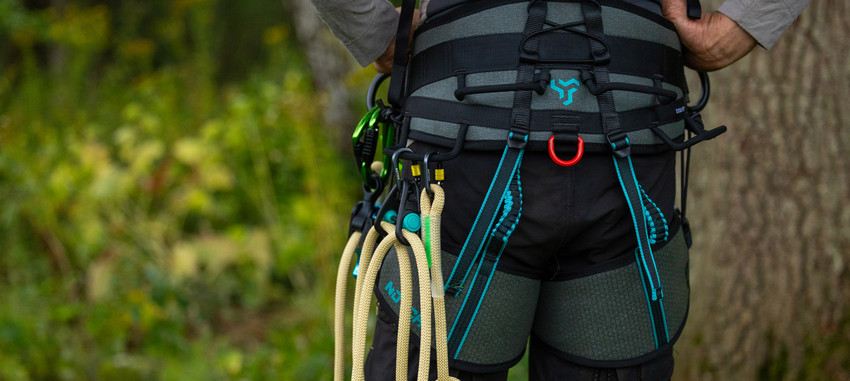TFTC #50 Inspecting Your Arborist Gear: A Checklist
Sherrilltree Jul 17th 2025In arboriculture, your gear isn’t just equipment — it’s your lifeline. Whether you're ascending a towering oak or rigging for removal, every component in your kit must perform without fail. Regular inspections are critical not only for your safety, but also for extending the lifespan of your gear and staying compliant with industry standards.
Below is a comprehensive checklist to help you inspect your arborist equipment before each climb and as part of your routine maintenance schedule.
Arborist Gear Inspection Checklist
Climbing Ropes & Hitches
- Check for abrasions, cuts, or glazing
Inspect the full length of the rope for frayed sheath fibers, heat damage, or flat spots. - Feel for hard spots or stiffness
These may indicate core damage or contamination. - Inspect eye splices and terminations
Look for signs of wear, loose stitching, or separation. - Verify rope cleanliness
Dirt and sap can degrade rope fibers over time. Wash if needed.
Carabiners, Snap Hooks & Connectors
- Inspect gate action
Gates should open and close smoothly and lock securely. - Check for cracks, burrs, or corrosion
Run your finger over the entire surface to detect imperfections. - Ensure markings are legible
Check serial numbers, load ratings, and CE/UIAA stamps.
Saddles & Harnesses
- Check stitching and webbing
Look for fraying, pulled threads, or UV damage. - Inspect all buckles and adjustment points
Ensure they lock and hold securely under tension. - Assess comfort padding
Foam should be intact and not breaking down.
Pulleys & Mechanical Devices
- Spin sheaves to ensure smooth rotation
Listen for grinding or feel for resistance. - Inspect side plates and axles
Watch for cracks, deformation, or corrosion. - Clean and lubricate per manufacturer specs
Avoid using oil-based lubes on parts not designed for them.
Lanyards, Slings & Webbing
- Inspect for cuts, burns, or stiffness
Pay close attention to sewn eyes or stitched terminations.
- Check hardware for cracks, burrs or corrosion
Run your finger over the entire surface to detect imperfections.
Helmets & Eye Protection
- Inspect the shell for cracks or fading
UV exposure degrades helmets over time — replace every 3–5 years, even if unused. - Check suspension system and straps
Should be snug, intact, and not brittle or dry. - Clean lenses and test anti-fog coatings
Vision is non-negotiable when operating at height.
Other Essentials
- First Aid Kit – Stocked and within expiration dates
- Throwline & Bags – Free of knots and stored properly
- Chainsaw Lanyards – Secure stitching and flexible elastics
How Often Should You Inspect?
- Daily / Before Each Use – Visual and functional checks
- Monthly – More thorough inspection, logging any wear
- Annually – Comprehensive review, potentially by a competent person or manufacturer-trained tech
Pro Tip: Keep an Inspection Log
Track the condition of your gear, date of inspection, and any maintenance performed. This is especially helpful for compliance with safety regulations, insurance, and team accountability.
Final Thought:
Gear failure isn’t just costly — it’s dangerous. Making inspections a part of your regular workflow ensures you’re climbing smarter, safer, and with confidence.(Dr. John Ball, 2022)

